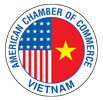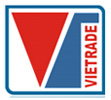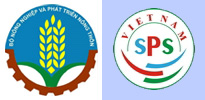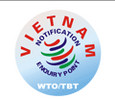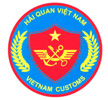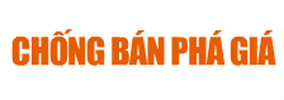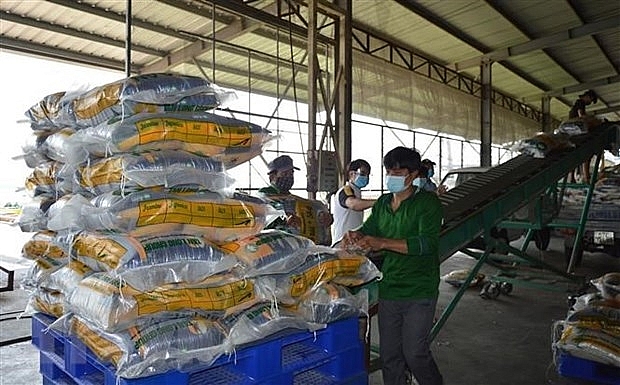
VFA recommends specific solutions for policy mechanisms, financial credit, and production activities. At the same time, adding a rice export floor price mechanism is suggested to ensure farmers' efficiency.
According to aggregated data, from August 1 to 15, rice exports reached 456,768 tons, worth more than 155 million USD, down 19.89% in volume over the same period but up 30.81% in value.
Cumulative rice exports from the beginning of the year to August 15 reached 5.351 million tons, worth 2.883 billion USD, compared to last year's period, increased 22.12% in quantity and 34.84% in value. This data has just been reported to the Government Office by the Vietnam Food Association (VFA) on the situation of rice production and export and the implementation of Decisions and Directives of the Prime Minister.
Maintain stability
According to VFA's report, the Vietnam Food Association has coordinated with the People's Committees of rice-producing localities to synchronously deploy tasks and solutions implementing the Prime Minister's Decisions and Directives to VFA members and rice export traders.
Specifically, traders strictly comply with the instructions of the Government and the Prime Minister, grasping opportunities in the international rice market to promote trade and benefit incentives to promote production and expand stable export markets. Thereby, VFA does hope to contribute to the economic growth of the country in general and the rice production industry in particular.
As for VFA members, in addition to actively exploiting the export market and selling all commodity rice to farmers at reasonable prices, they ensure circulation reserves and are ready to participate in stabilizing the domestic market and ensuring national food security in all situations.
Regarding production progress, as of August 18, according to data from the Department of Crop Production under the Ministry of Agriculture and Rural Development and provinces and cities in the Mekong Delta, the 2023 Summer-Autumn crop has been harvested 926,000 hectares/1.482 million hectares of sown area with an average yield of 59.33 tons/ha, the estimated output of 5.495 million tons of rice; In the Fall-Winter 2023 crop, 420,000 hectares have been sown/700,000 hectares of the planned area, and 11,00 hectares have been harvested.
India's ban on rice exports on July 20, followed by orders to stop rice exports from several countries, made demand for this essential food product scarce, pushing rice prices up sharply compared to the previous year. It had a major impact on the world rice trade market. Vietnam has taken advantage of opportunities to exploit the market and improve efficiency for rice farmers. However, the process of implementing Vietnamese rice export businesses faces some difficulties.
According to VFA, the supply chain is broken from farmers to traders (mixed goods) to rice processing mills and exporters due to rapid price fluctuations. The main reason is that they cannot mobilize goods sources to carry out signed contracts.
VFA has issued a document requesting member businesses to try to ensure the implementation of signed export contracts to stabilize and maintain the market while negotiating with partners to extend delivery schedules to minimize losses due to price fluctuations. For new contracts, ensuring a foot of goods before signing is necessary. If there is no contract, the quantity purchased should be limited to avoid fluctuations and disturbances in domestic prices.
Currently, there are over 200 traders licensed by the Ministry of Industry and Trade to qualify for rice export business according to Decree No. 107/2018/ND-CP on rice export business.
Despite specific regulations, most traders have not properly implemented the reporting regime, especially the status of signing and implementing export contracts and inventory at each time.
These drawbacks slow down the synthesis work and thereby cause delays in timely data report collection to serve macro management due to lack of information data. On the other hand, credit capital is currently the greatest concern to traders today as most are facing difficulties accessing credit capital, especially working capital. Meanwhile, the rice trade market in recent years has been volatile; low credit limits have affected the purchasing progress of traders, and the lack of capital to buy rice for reserve has reduced business competitiveness.
Remove barriers in credit and production
According to VFA, the world rice production and trade market in the coming time is forecast to contain many fluctuations and risks due to the rice import and export uncertain policies of some countries, unusual climate changes and the issue of national food security being brought to the forefront. Vietnam's rice export businesses strictly comply with the instructions of the Government and the Prime Minister.
In the above context, VFA recommends several specific solutions for policy mechanisms, financial credit and production activities. Specifically, regarding policy mechanisms, the Vietnam Food Association proposed adding specific regulations on reporting mechanisms and assigning a management agency in charge of controlling rice and commodity export contracts as well as inventory rice of traders who are eligible for rice export business according to Decree 107/2018/ND-CP of the Government.
At the same time, VFA proposed adding a mechanism to regulate the floor price of rice exports to protect rights and improve healthy competition for rice farmers, especially for those who have invested in production facilities according to Decree 109/2010/ND-CP and traders rented warehouses according to Decree 107/2018/ND-CP.
Regarding finance and credit, VFA recommends that the Government and the State Bank consider a capital support mechanism for traders to increase financial resources to serve rice purchasing activities, ensuring rice inventory storage for circulation.
Regarding production activities, VFA requests that the Ministry of Agriculture and Rural Development deliver a strict management mechanism on agricultural inputs to ensure the quality of rice output following food safety and hygiene standards, environmental protection and the requirements of domestic and foreign markets. This is an important premise to successfully build the Vietnamese rice brand in the world rice trade market, thereby contributing to achieving the goal of "green agriculture and sustainable development".
Source: VCN
Keywords: VFTA, rice, export, production, market







